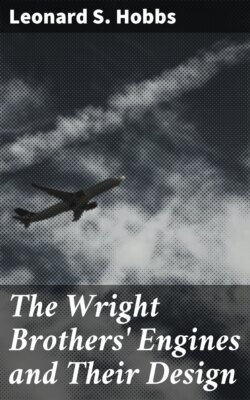Читать книгу The Wright Brothers' Engines and Their Design - Leonard S. Hobbs - Страница 3
На сайте Литреса книга снята с продажи.
Foreword
ОглавлениеTable of Contents
In this fifth number of Smithsonian Annals of Flight Leonard S. Hobbs analyzes the original Wright Kitty Hawk Flyer engine from the point of view of an aeronautical engineer whose long experience in the development of aircraft engines gives him unique insight into the problems confronting these remarkable brothers and the ingenious solutions they achieved. His review of these achievements also includes their later vertical 4-and 6-cylinder models designed and produced between 1903 and 1915.
The career of Leonard S. (Luke) Hobbs spans the years that saw the maturing of the aircraft piston engine and then the transition from reciprocating power to the gas turbine engine. In 1920 he became a test engineer in the Power Plant Laboratory of the Army Air Service at McCook Field in Dayton, Ohio. There, and later as an engineer with the Stromberg Motor Devices Corporation, he specialized in aircraft engine carburetors and developed the basic float-type to the stage of utility where for the first time it provided normal operation during airplane evolutions, including inverted flight.
Joining Pratt & Whitney Aircraft in 1927 as Research Engineer, Hobbs advanced to engineering manager in 1935 and in 1939 took over complete direction of its engineering. He was named vice president for engineering for all of United Aircraft in 1944, and was elected vice chairman of United Aircraft in 1956, serving in that capacity until his retirement in 1958. He remained a member of the board of directors until 1968. Those years saw the final development of Pratt & Whitney's extensive line of aircraft piston engines which were utilized by the United States and foreign air forces in large quantities and were prominent in the establishment of worldwide air transportation.
In 1963 Hobbs was awarded the Collier Trophy for having directed the design and development of the J57 turbojet, the country's first such engine widely used in both military service and air transportation.
He was an early fellow of the Institute of Aeronautical Sciences (later the American Institute of Aeronautics and Astronautics), served for many years on the Powerplant Committee of the National Advisory Committee for Aeronautics, and was the recipient of the Presidential Certificate of Merit.
Frank A. Taylor, Acting Director National Air and Space Museum
March 1970
